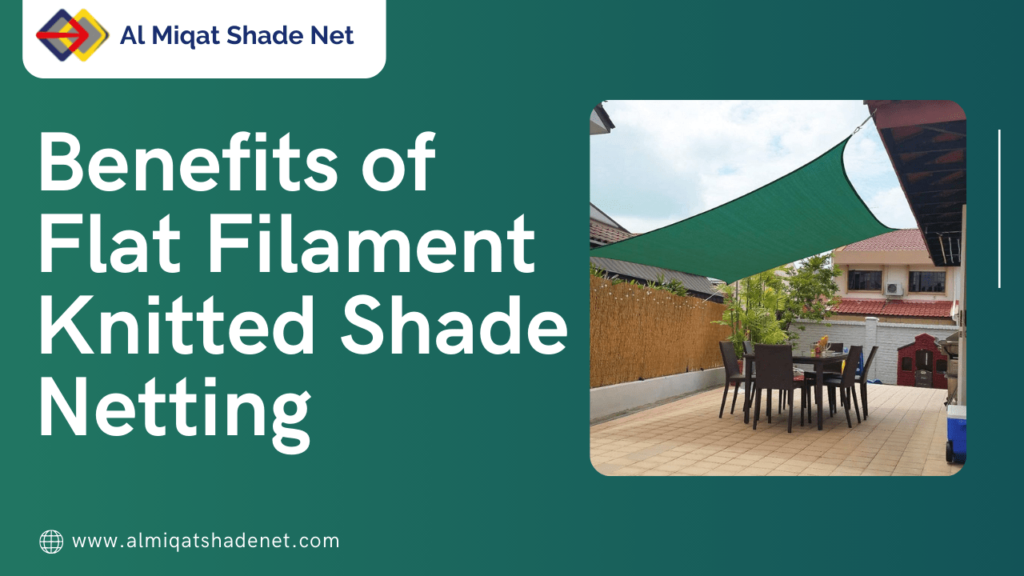In the realm of shading solutions, flat filament knitted shade net has emerged as a cutting-edge and versatile option. Engineered through advanced knitting techniques, this type of shade netting offers a range of benefits that cater to the diverse needs of agriculture, horticulture, construction, and other industries. In this article, we will explore the advantages of flat filament knitted shade nets, shedding light on how this innovative shading solution is making a significant impact in various applications.
1. Optimal Shading and UV Protection:
Flat filament knitted shade nets are designed to provide optimal shading, protecting plants, crops, and other materials from the harsh effects of sunlight. The dense knit structure effectively filters sunlight, reducing the intensity of UV rays that can be detrimental to plant growth and the quality of stored items. This shading not only enhances the well-being of plants but also contributes to the preservation of goods and materials.
2. Temperature Control and Microclimate Management:
One of the key benefits of flat filament knitted shade nets is their ability to regulate temperatures and create a favorable microclimate. By diffusing sunlight and reducing direct exposure, these shade nets help maintain a more stable temperature, preventing excessive heat buildup. This is particularly crucial in agriculture, where temperature fluctuations can impact plant health, growth, and yield. The microclimate control provided by flat filament knitted shade nets contributes to enhanced crop productivity.
3. Improved Ventilation and Air Circulation:
Unlike traditional shade materials, flat filament knitted shade nets are designed with micro ventilation features. The knitted structure allows for improved air circulation, facilitating the exchange of fresh air and preventing the buildup of humidity. This ventilation is especially beneficial in greenhouse applications, where maintaining optimal humidity levels is essential for plant health and disease prevention.
4. Durability and Longevity:
Flat filament knitted shade nets are crafted from high-quality materials, ensuring durability and longevity. The flat filament technology enhances the strength of the shade net, making it resistant to tearing and wear. This durability ensures that the shade net can withstand outdoor conditions, including exposure to sunlight, wind, and rain, without compromising its performance.
5. UV Stabilization for Extended Lifespan:
To further enhance their resilience to sunlight exposure, flat filament knitted shade nets often undergo UV stabilization processes. This treatment protects the netting material from the deteriorating effects of prolonged UV exposure, extending the lifespan of the shade net. UV-stabilized shade nets remain effective for a more extended period, providing reliable shading solutions for multiple growing seasons.
6. Customization and Flexibility:
Flat filament knitted shade nets offer a high degree of customization and flexibility. They are available in various shading percentages, allowing users to choose the level of shading that best suits their specific requirements. This customization ensures that the shade net can be tailored to the unique needs of different crops, plants, or applications.
7. Pest and Insect Control:
The dense knit structure of flat filament knitted shade nets acts as a barrier against pests and insects. By creating a physical barrier, these shade nets help prevent the intrusion of harmful pests, reducing the need for chemical pesticides. This natural form of pest control is particularly advantageous in organic farming and environmentally conscious agricultural practices.
8. Protection against Adverse Weather Conditions:
Flat filament knitted shade nets protect against adverse weather conditions such as hail and heavy rainfall. The netting acts as a shield, preventing damage to delicate plants or crops during storms. This protective feature is valuable in regions prone to sudden weather changes, offering a safeguard against unpredictable climatic events.
9. Energy Savings in Greenhouses:
In greenhouse applications, where controlled environments are essential, flat filament knitted shade nets contribute to energy savings. By reducing the intensity of sunlight and controlling temperatures, these shade nets minimize the need for excessive cooling systems. This results in energy efficiency and cost savings for greenhouse operators.
10. Aesthetic Appeal and Visual Comfort:
Beyond their functional benefits, flat filament knitted shade nets also contribute to aesthetic appeal and visual comfort. The evenly diffused light creates a pleasant environment, whether in agricultural settings, outdoor spaces, or construction sites. The visual comfort provided by these shade nets makes them suitable for applications where the well-being of individuals or the aesthetics of the surroundings are important considerations.
Conclusion:
Flat filament knitted shade nets represent a paradigm shift in shading solutions, offering a host of benefits that align with the evolving needs of various industries. From agriculture and horticulture to construction and environmental control, these shade nets contribute to optimal growth conditions, protection against adverse elements, and sustainable practices. As innovation continues to shape the landscape of agricultural and industrial technologies, flat filament knitted shade nets stand out as a versatile and efficient solution that brings together functionality, durability, and environmental consciousness.


